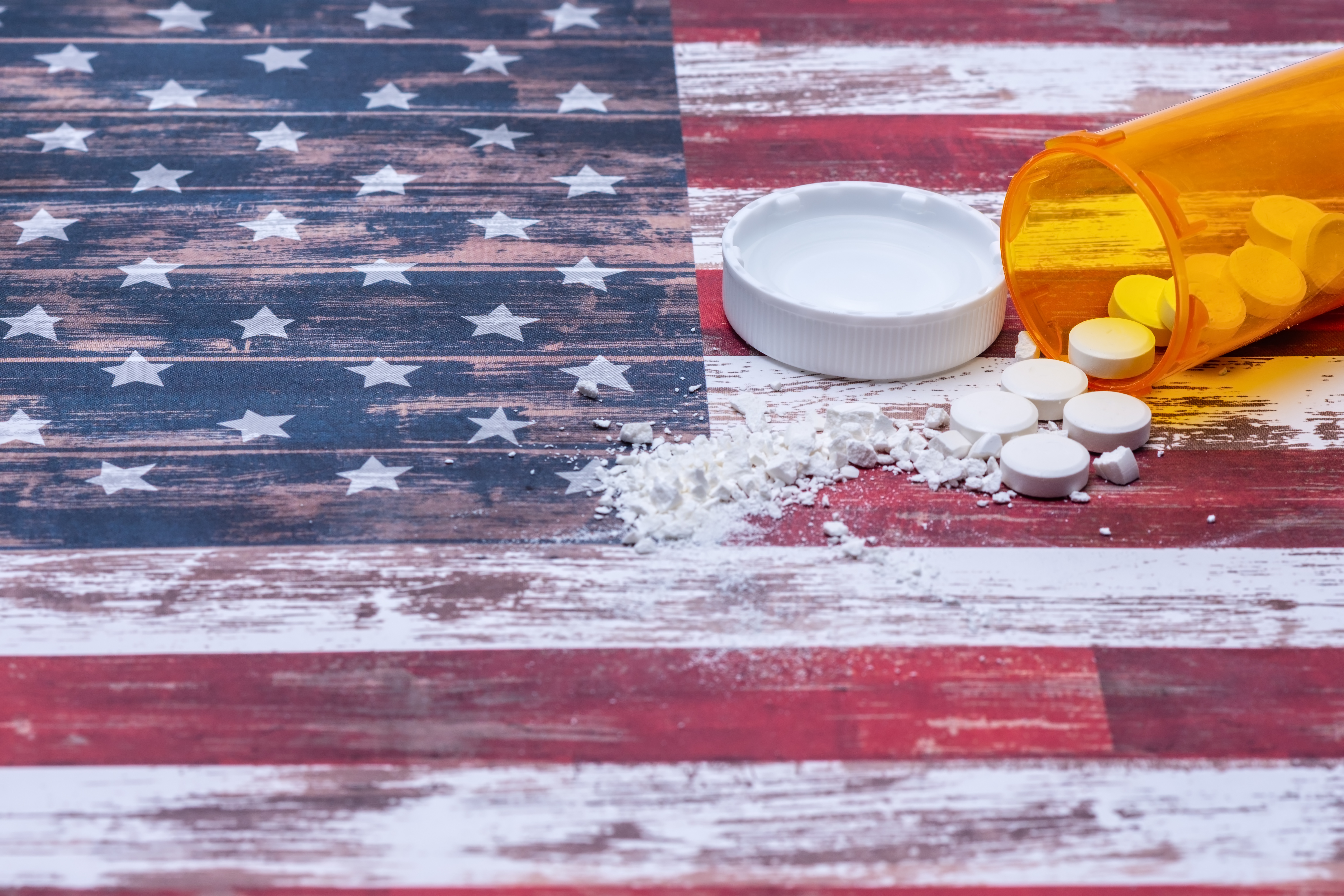Currently, more than 130 people in the United States die every day from opioid overdose. What is now considered to be a national crisis also carries a severe burden on social welfare and the U.S. economy.
The U.S. Centers for Disease Control and Prevention (CDC) estimates that over $75.8 billion dollars a year is lost to the epidemic – for healthcare costs, lost productivity, addiction treatment, and for the involvement of criminal justice. The opioid epidemic in America is directly correlated with heroin addiction, and the misuse of prescription painkillers and synthetic opioids such a fentanyl. What’s worse, the problem continues to grow in severity and with virtually no positive changes visible on the horizon. Sadly, it’s likely this will remain truth unless other alternatives are explored – such as the use of cannabidiol (CBD) to help manage the symptoms of opioid addiction.
A Prescribed Epidemic

Over-prescribing practices helped fuel the current epidemic
How did this even begin? The early 1990’s can be considered the first wave of the opioid epidemic’s destructive cycle, beginning with a spike in prescribed medications for the treatment of cancer-related symptoms and pain. Physicians had begun to prescribe opioid and opioid-combination medications to patients more frequently, mainly due to the fact that pharmaceutical companies and medical societies had reported that the risk of addiction was very low.
By the year 2000, 86% of patients were misusing the medications to treat non-cancer related pain. In areas where opioids were more available and were prescribed with regularity, increases in opioid addiction began to occur. Diversion also became an issue in these areas, by which patients began to transfer their opioid medications to other people illegally, thus furthering the devastating effects of the epidemic.
The Opioid Epidemic Problem
In 2010, deaths caused by heroin overdose began to increase dramatically. It is firmly believed that the legal measures taken to decrease the number of opioid prescriptions had paradoxically been a key contributor to the deaths. As such measures made opioids harder to obtain, patients began to turn to a less expensive, highly illegal, and easier to obtain drug – which was heroin.
Between 2010 and 2013, heroin-related overdoses increased by an astronomical 286%. What’s more, over 80% of those addicted stated that they had abused opioid medications prior to using heroin. The 2010 wave of heroin addiction also brought an increase in permanent and often fatal side effects in users, including the contraction of HIV/AIDS, hepatitis B and C, skin infections, bloodstream infections, and cardiac infections.
Pitfalls in the Solution

Legal methods did little to curb the Opioid Epidemic
By 2013, the heroin epidemic was in full swing with very few recovery options for all of those affected. This was the year in which a nasty drug began to take center stage in the epidemic – manufactured fentanyl. Fentanyl can be 50-100 times more potent than morphine and 50 times more potent than many forms of heroin, and when misused, it is likely to be deadly.
As a prescribed medication (originally created in 1960), fentanyl has been used by medical professionals to treat long-term pain, either after surgery or in special cases where pain management is needed on a constant basis (something that is a proven benefit of CBD use for pain).
Fighting Addiction with Regulation
Though the opioid epidemic has grown increasingly severe since the early 1990’s, it seems the approach taken by government agencies to solve the problem has changed very little over the years. The CBD has issued comprehensive guidelines in regards to prescribing opioids for chronic pain outside of cancer treatment.
These measures limit prescribed medications to palliative care and end-of-life care in an attempt to reduce the number of opioid prescriptions and quell the opioid epidemic. However, these efforts do not seem to have significant impact on the problem as a whole, and the problem persists at an alarming rate across the country.
CBD: A Potential Alternative

CBD looks like a promising option to safely treat addiction symptoms
With increased attention to safer and more natural healing methods – such as holistic practices and organic medicine, there is some hope for new ways to treat opioid addiction, which includes CBD as a possible means. As an all-natural plant compound, CBD’s wide range of proven uses can be very beneficial to managing symptoms of addiction, and even symptoms of withdrawal.
Though scientific research is still limited on CBD’s exact effects on the different stages of opioid withdrawal, the studies that do exist have proven that CBD can assist in both opiate addiction as well as opiate relapse. CBD, unlike its counterpart THC, causes no mind-altering effects. When compared to opioid medications, CBD causes virtually no negative side effects following consumption.
A New Perspective
Many opioid medications employ the endogenous opioid system to take effect. This ironically includes many medications used to treat opioid abuse. This biological system is one of the most studied systems for pain management and is specifically targeted by opioid medications. According to the University of Chicago:
“This system consists of widely scattered neurons that produce three opioids: beta-endorphin, the met- and leu-enkephalins, and the dynorphins. These opioids act as neurotransmitters and neuromodulators at three major classes of receptors, termed mu, delta, and kappa, and produce analgesia. Like their endogenous counterparts, the opioid drugs, or opiates, act at these same receptors to produce both analgesia and undesirable side effects.”
What’s intriguing is that opiates and CBD target the same receptors in this system, the CB1 and CB2 receptors. CBD primarily affects the CB1 receptors however, and though it has been observed to hold a low attraction to them, the health benefits that are experienced by users are very significant. What’s more, both of these receptors can be contribute to pain management as well as mood regulation, reward processing and the development of addiction.
Conclusion
Unfortunately, studies revolving around CBD and its benefits to addiction are still very much in the infant stage. Even so, many patients with substance abuse disorders, including those affected by the opioid epidemic, are highly likely to be positively affected by the use of CBD, and may finally experience reduced symptoms of addiction.
As most medications for opioid abuse target the endogenous opioid system with many pitfalls, CBD targets the endocannabinoid system, and with little to no adverse side effects. With further research, this information could provide us with a greater insight on how to modulate opioid-related behavior and addiction. Hopefully, through such research, we may revitalize addiction treatment and finally begin to overcome the decades of damage caused by the opioid epidemic.







